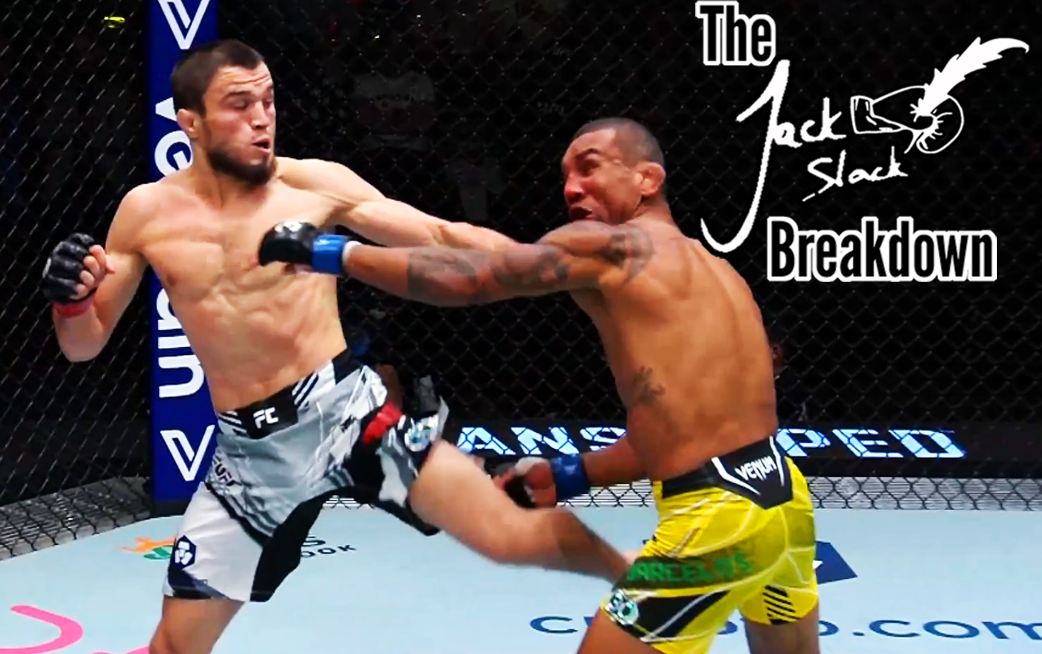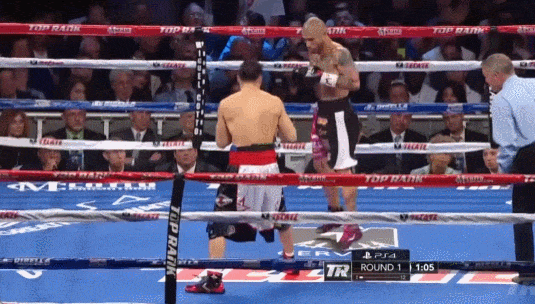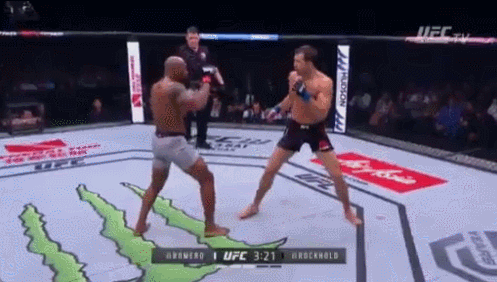Umar Nurmagomedov - The Dark Horse
Someone at the UFC forgot to knock on wood back in August 2023, and we lost one of the most intriguing match ups in the sport. Now Umar Nurmagomedov and Cory Sandhagen have been preparing to face each other for over a year and this weekend—if the planets align and the mischievous spirits governing this sport permit—we will finally get to watch them have at it.
Cory Sandhagen has improved exponentially over the last few years, knocking off bantamweight contenders one after the other with an unflappable demeanor and the right gameplan for every opponent. Yet we have studied Sandhagen several times before and, as great as Sandhagen is, it is his enormously hyped and largely untested opponent drawing the eyes to this fight.
At this point it is hard to separate the fighter from the myth. If you listen to Umar Nurmagomedov’s PR campaign—and ignore Umar’s own withdrawal from several fights against stronger opposition—everyone in the division is ducking him. But this is just a side effect of being an exciting, talented fighter who has had some bad luck in scheduling. You cannot begrudge fans for wanting to see more of Umar Nurmagomedov, because who wouldn’t? Let us examine Dagestan’s trendiest new export.
Sizzle vs Steak
One reason for the hype is that Umar Nurmagomedov’s style is noticeably flashier than his teammates. I can almost guarantee that from the moment Saturday’s main event starts, to the moment it ends, Daniel Cormier will be raving about Nurmagomedov’s question mark kick, whether he is landing it or not.
A novel way that Nurmagomedov uses his whipping lead leg high kick is as a counter. Standing southpaw against an orthodox opponent, his right leg has a tricky task because it is kicking to the closed side of the opponent’s body and is going to be largely ineffective landing anywhere from hip to shoulder.
An exaggerated turnover on the end of the kick—as in the question mark kick—allows the kicker to sneak his strike over the opponent’s lead shoulder. Throwing it as the opponent steps forward from out of range increases the chances of them opening the space for the kick. Like every flashy Umar kick, it hasn’t knocked anyone out yet, but he stunned Sergey Morozov and gave others pause for thought.
More effective, but less appreciated, is Umar’s consistent use of the teep. This is a tactic he shares with his teammate, the current Bellator lightweight champion, Usman Nurmagomedov. Is the mundane teep the set up for the flashy high kick? Or is the high kick that never really lands a set up for the three or four times he is able to dig the ball of his foot into their stomach in between?
Where Umar’s southpaw right high kick punishes the opponent’s lead hand coming forward, his teep hammers them when they try to play a disciplined, tight guard.
Developing Hands
The Sage of Makhachkala himself, Khabib Nurmagomedov has said that Umar’s boxing needs some work and, at least a few fights ago, he considered it the weak link in Umar’s game. Boxing might be an area of Umar’s skillset that lacks depth, but in mixed martial arts it is still completely viable to play a game of extremes, navigating between kicking range and clinching range without pausing in the middle.
It is probably not the comparison Umar fans want to hear, but Paddy Pimblett shone against Bobby Green last weekend by keeping Green out at the end of his kicks for as much of the fight as possible. When Green committed to a big step to close distance, Pimblett saw it a mile off an was able to land a couple of good counter punches of his own, even while deliberately limiting how much he engaged in boxing.
That is how Umar’s game often appears: long range kicking to wear down the opponent, and the odd stiff punch to either get the opponent off him, or get them swinging back so he can immediately change level onto a takedown attempt. Extended boxing work is not something you typically see from Umar and with so many options open to him, why should it be if the opponent cannot force it out of him? He exploded into the casual fan’s consciousness by knocking out Raoni Barcelos with a short left hand off a knee, but aside from the odd step in off a kick, Umar’s left hand is something of an afterthought in his fights.
Umar is a great example of a southpaw fighter using the inside foot position / inside angle to score. A disadvantage of this position is that, in the course of stepping to inside of the opponent’s lead foot, the fighter can place himself on a line, limiting his ability to hit with his rear hand and compromising his balance if he is struck. Umar almost exclusively sharp shoots with single jabs and the occasional big right hook on the inside foot position.
That is not to say it is impossible to do two handed hitting from the inside angle. Tenshin Nasukawa scored a knockout with a sensational one-two from inside foot position the other weekend.
But you will notice that Tenshin is committing himself to the left hand from the moment he begins to step. His left foot has to come up to catch him as his weight surges forwards. Had the jab been his focus, and had he bladed his stance to make that jab as long and as stiff as possible, he would have had a very hard time following up with his left hand.
A great example of the inside step lead hook in boxing is Miguel Cotto’s performance against Sergio Martinez. Cotto did great work in flurries, and stepping outside the lead foot as well, but would occasionally commit to a big step onto the inside angle with a booming left hook. He knocked Martinez down three times in the first round and stopped him in the tenth.
Aside from needling with single shots on the inside foot position, you will see Umar go to his right hook instinctively when he is put under pressure or his opponent returns fire. While he works from both orthodox and southpaw stance in his fights, the moment he is attacked or caught out of position, he backs up, blades his stance and throws his southpaw right hook.
It is a peculiar habit that can be forced out of him, and is the sort of thing you might see if a couple of untrained mates put on boxing gloves and only wanted to poke and swing with their strong hand.
Umar will also put himself into disadvantageous position by getting crossed up as he kicks. He throws an abundance of teeps—which is great—but each time one gets knocked offline, he ends up conceding an angle and, crucially, trying to run backwards out of it.
In his last fight, Umar was dropped from this position by the almost completely unknown Bezkat Almakhan.
A Surprising Familiarity
Umar Nurmagomedov’s ultra-reliance on the bladed jab to attack and the retreating right hook to get him out of trouble might ring familiar to long time fans of MMA. This was the bread and butter of former UFC middleweight champion, Luke Rockhold. His height and length made him a nightmare for most middleweights, and when he leaned back on that right hook his head might as well have left the cage. Ultimately it was that right hand obsession that got Rockhold into trouble. First as he jabbed onto the inside foot position against Michael Bisping and found himself crossed up.
Rockhold snapped Bisping’s head back with the jab, but placed Bisping into outside foot position and onto his lead shoulder. You can see Umar do the same thing—but not suffer the most surprising knockout of the last ten years—against Barcelos. Up until that point, Rockhold had been largely in control and hammering Bisping with his usual looks. It was simply that getting too deep on the inside angle and then trying to run backwards out of it was a fairly substantial unforced error.
Like Umar, Rockhold’s lean back right hook was his get-out-of-jail counter. When Yoel Romero crowded Rockhold towards the fence and flicked out the double jab, he was able to get on top of Rockhold and shoot his left straight down the inside of the wide swing. Rockhold also threw himself bodily into his counter hook, so his head was whipping away from his shoulder and the side of his jaw was completely exposed to the counter.
We have repeated it for over a decade at this point but errors are not what top level athletes need to worry about. Habits—exploitable habits—are where great fighters can catch other great fighters. If no one can bring Umar Nurmagomedov’s one handedness, commitment to the inside foot position, and one-size-fits-all counter right hook to lever against him, they were never errors to begin with. Fighting is all about what you can get away with, not about being perfect.
Cory Sandhagen might come out and double up his left hand to get Umar throwing his hook, then brain him with a high kick. But Sandhagen might have the grandest of plans to exploit these striking habits and end up fighting off a smothering grappling offence instead.
How the Graps Break Everything
My goal today was simply to have a look at Umar Nurmagomedov’s striking tendencies, but these cannot be separated from his grappling. A few weeks ago we examined his teammate, Ikram Aliskerov and noted that Alikserov adores striking, except when he’s not easily winning. The moment the opponent lands something back, Aliskerov is setting up the takedown. There is a degree of that with Umar too; you need only look at his last fight. He was caught and dropped in the first minute of the match and attacked a takedown to prevent a follow up, but thereafter it was a grappling match with some high kicks from extreme distance sprinkled in.
And that is the pickle that every opponent of every fighter from Nurmagomedov’s camp faces. To exploit habits in the striking, you need to be able to do a bit more than throw one big strike at a time. But the moment he lures you into thinking you can throw a combination, or feint him backwards, or are about to have a trade in striking range, Umar Nurmagomedov is in on his single leg.
There is a lot to like about Umar’s grappling. One thing that always pleases this writer is a fighter using the crackdown to finish the head outside single.
The crackdown is odd for a couple of reasons. It puts the opponent’s hip on the mat with surprising ease, but that is because the takedown isn’t really finished and the fight isn’t over. When you get an opponent down to their hip in a crackdown, you are almost passed the guard—which is great on any other takedown—but in a crackdown you have to retreat to put yourself in front of their legs and remove the threat of them coming out on your back. While it is commonplace in amateur wrestling, in MMA it has been best used by awkward, unexplosive grapplers like Rani Yahya and Jake Shields. This is perhaps because it turns a single leg into a technical mat exchange rather than one of those sequences where Mateusz Gamrot chases a fighter twice around the Octagon as they hop on one leg.
Nurmagomedov has carved out a reputation as “the rear naked choke guy” with six wins by RNC in nine finishes. Sometimes he gets a little too passionate about maintaining this reputation—as when he leapt right over the top of Sergey Morozov, hoping to score some quick bonus money. But for the most part Umar’s rear naked choke is built around the effective system of cage wrestling his team are known for.
In grappling, a fighter in the backpack position will normally have one hand over his opponent’s shoulder—looking for chokes—and the other hand underneath their armpit, fighting one of the opponent’s hands.
It is difficult to hunt for chokes with both hands at the same time because bringing them both above the opponent’s shoulders sacrifices control over the opponent’s torso. By getting on the back as his opponent tries to fight their way up against the cage, Umar ends up in a position where he can work for chokes with both hands, punch, and try to flatten his opponent out, because his opponent is forced to hold up their weight on at least one posted arm.
The alternative for the opponent is to remove the post and fall to their side or back. Bezkat Almakhan opted for this a couple of times, and Umar can also force it by folding the opponent down on their wrist with the “Dagestani handcuff.” Essentially the bottom man quits building back up and concedes the three-quarter mount, to avoid losing the handfight and giving up the choke.
Like his cousin Usman, Umar Nurmagomedov has come to be known as “the striking Dagestani”, when really it is his B-game that is probably going to cause the real problems for high level opposition.
And that is what is so exciting about this weekend: we finally get to see Umar Nurmagomedov against real, cream of the crop, elite opposition. Rising out of a year long swamp of UFC Apex dirge, Cory Sandhagen versus Umar Nurmagomedov is a gleaming beacon of hope for the weary MMA fan.
————————————————————————————————————————
For a bit more about the beautiful art of boxing, check out the Advanced Striking 2.0 edition on Jose Napoles.
For more MMA, read last week’s Patreon article on Lessons from Leon Edwards vs Belal Muhammad 1.
















